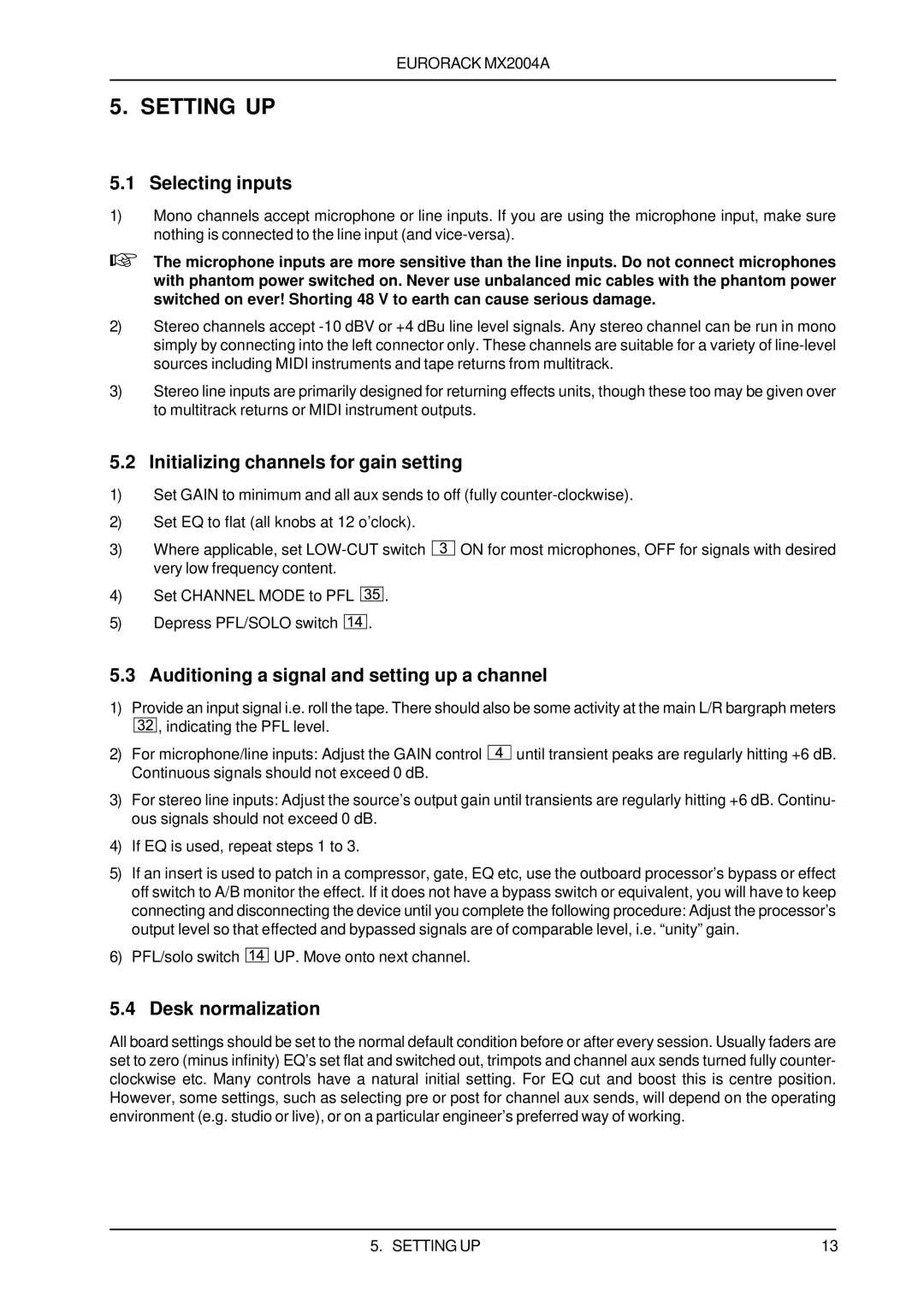
EURORACK MX2004A
5. SETTING UP
5.1 Selecting inputs
1)Mono channels accept microphone or line inputs. If you are using the microphone input, make sure nothing is connected to the line input (and
+The microphone inputs are more sensitive than the line inputs. Do not connect microphones with phantom power switched on. Never use unbalanced mic cables with the phantom power switched on ever! Shorting 48 V to earth can cause serious damage.
2)Stereo channels accept
3)Stereo line inputs are primarily designed for returning effects units, though these too may be given over to multitrack returns or MIDI instrument outputs.
5.2 Initializing channels for gain setting
1)Set GAIN to minimum and all aux sends to off (fully
2)Set EQ to flat (all knobs at 12 o’clock).
3)Where applicable, set ![]()
![]()
![]() ON for most microphones, OFF for signals with desired very low frequency content.
ON for most microphones, OFF for signals with desired very low frequency content.
4)Set CHANNEL MODE to PFL ![]()
![]()
![]() .
.
5)Depress PFL/SOLO switch ![]()
![]()
![]() .
.
5.3 Auditioning a signal and setting up a channel
1)Provide an input signal i.e. roll the tape. There should also be some activity at the main L/R bargraph meters
![]()
![]()
![]() , indicating the PFL level.
, indicating the PFL level.
2)For microphone/line inputs: Adjust the GAIN control ![]()
![]()
![]() until transient peaks are regularly hitting +6 dB. Continuous signals should not exceed 0 dB.
until transient peaks are regularly hitting +6 dB. Continuous signals should not exceed 0 dB.
3)For stereo line inputs: Adjust the source’s output gain until transients are regularly hitting +6 dB. Continu- ous signals should not exceed 0 dB.
4)If EQ is used, repeat steps 1 to 3.
5)If an insert is used to patch in a compressor, gate, EQ etc, use the outboard processor’s bypass or effect off switch to A/B monitor the effect. If it does not have a bypass switch or equivalent, you will have to keep connecting and disconnecting the device until you complete the following procedure: Adjust the processor’s output level so that effected and bypassed signals are of comparable level, i.e. “unity” gain.
6)PFL/solo switch ![]()
![]()
![]() UP. Move onto next channel.
UP. Move onto next channel.
5.4 Desk normalization
All board settings should be set to the normal default condition before or after every session. Usually faders are set to zero (minus infinity) EQ’s set flat and switched out, trimpots and channel aux sends turned fully counter- clockwise etc. Many controls have a natural initial setting. For EQ cut and boost this is centre position. However, some settings, such as selecting pre or post for channel aux sends, will depend on the operating environment (e.g. studio or live), or on a particular engineer’s preferred way of working.
5. SETTING UP | 13 |
